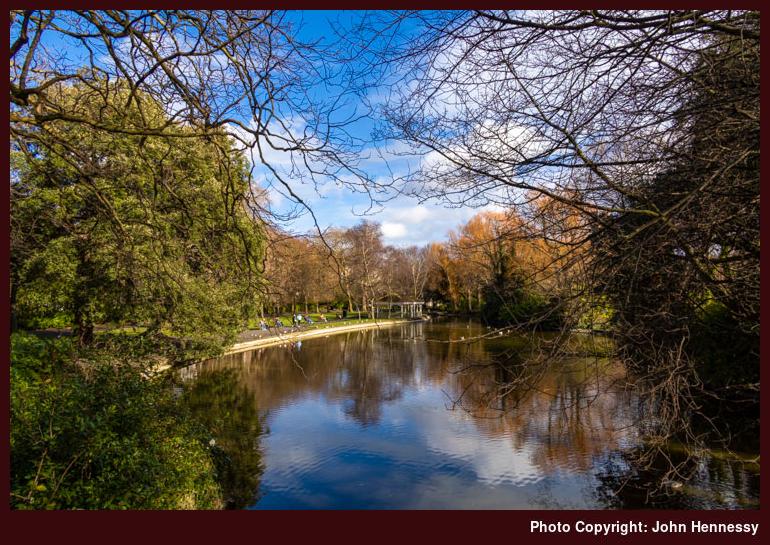Stephen's Green, Dublin, Éire

St. Stephen's Green dates from the time of King Charles I but has had a wide and varied history. Having a house around it became fashionable by the late seventeenth century, when plots of land became available for the building of two-story buildings. The diminishing chance of attack from the native Irish helped. During the eighteenth century, mansions for nobles were built and some survive today. At that time, the green was unfenced and could be used for all sorts of undesirable purposes: hangings, riots and so on. In 1815, it received the current iron railing to commemorate Waterloo. In 1880, philanthropist Lord Ardilaun landscaped it largely as we see it today, even if the Easter Rising in 1916 did the place no favours, and gave it to the city.
St. Stephen's Green is also home to several memorials. There is one to Countess Markiewicz, who led a contingent of the Citizen's Army here during the 1916 rising. Other notables honoured in the same way include William Butler Yeats, Lord Ardilaun, Jeremiah O' Donovan Rossa and James Joyce. Some monuments have suffered over the years: the Wolfe Tone monument was defaced in 1969 and subsequently got replaced. However, a statue of King George II suffered the same fate as Nelson's Column in O' Connell Street: it was blown up and subsequently removed.
See more photos from this album (City of Dublin)